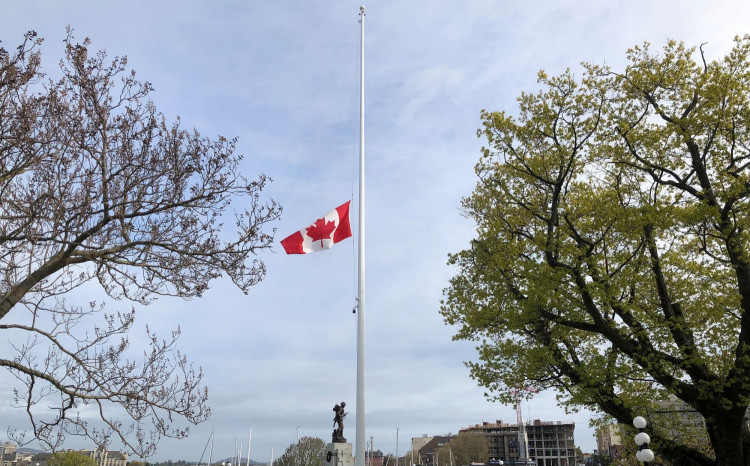The remains of 215 children, some as young as three years old, were discovered on the grounds of the Kamloops Indian Residential School in British Columbia, according to Tk'emlúps te Secwépemc Chief Rosanna Casimir.
Casimir said the remains were discovered by a radar specialist who has yet to complete a scan of the school premises.
The recent discovery of 215 bodies in the grounds of what was once the country's largest Indigenous residential school - where Indigenous children were sent after being removed from their communities - was described by Canadian Prime Minister Justin Trudeau as a "painful reminder of that dark and shameful chapter" of the country's history.
"To honor the 215 children whose lives were taken at the former Kamloops residential school and all Indigenous children who never made it home, the survivors, and their families, I have asked that the Peace Tower and all federal buildings be flown at half-mast," Trudeau tweeted.
According to a 2015 report by the Truth and Reconciliation Commission of Canada, residential schools were "an integral part of a conscious policy of cultural genocide" against Canada's Indigenous population.
The system was established over a century ago to segregate Aboriginal children from their families and "indoctrinate children" into a new culture, according to the report, with the last such school closing in the 1990s. Many cases of physical abuse and neglect were described in the report.
At least 150,000 Indigenous children were enrolled in the system during its operation, with more than 6,000 estimated to have died.
According to the report, about half of the cases had no recorded cause of death, and the exact number of deaths is unlikely to ever be known due to the large number of lost and incomplete records.
Casimir said enrolment at Kamloops Indian Residential School, which operated from 1890 to 1978, peaked at roughly 500 students at any one time.
The Tk'emlúps te Secwépemc community, which is located in the southern interior of British Columbia, released a statement late Thursday acknowledging an "unthinkable loss that was spoken about but never documented."
The investigation will continue in conjunction with the BC Coroner's Office, and community and government officials will ensure the remains are secured and identified, according to community leaders.
Lisa Lapointe, the chief coroner, issued a statement noting that her office is early in the process of gathering information.






